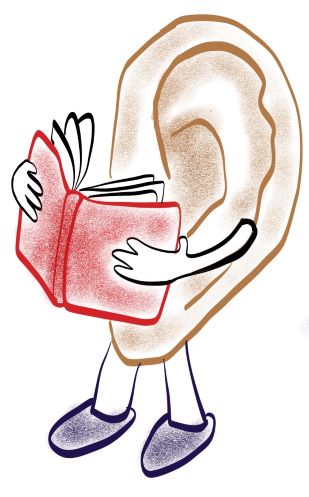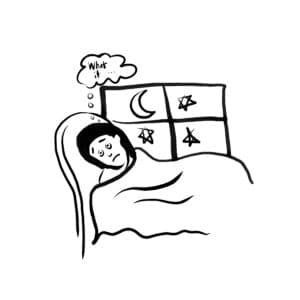
How Going Gluten-Free Transformed our Home
Hi, I’m Melissa, Beth asked me to explain how going gluten-free made a difference in our household. I have a

I assure them audiobooks are fantastic for people with dyslexia, and their children are definitely not cheating. However, there are some things to bear in mind with ear reading.
I first came across the term ‘ear reading’ in 2017 when I read Ben Foss’s The Dyslexia Empowerment Plan.
In chapter six of his book, Ben explains that information is like water, which can be liquid, ice or steam.
Reading is not a natural activity. Although human brains are wired to speak, they must be trained to read. The conventional way to read is by looking at individual letters and processing them into words in the brain. For children with dyslexia, this process may prove difficult, and they will require specific phonemic instruction. See this post on how I taught my son to read and spell in 30 minutes a day.
Ear reading means using audiobooks or technology to enable text-to-speech. The brain processes words taken in via the ears.
Dyslexic students often have a high IQ and may become frustrated at being unable to read age-appropriate texts. When friends discuss their latest books, a dyslexic student may feel excluded. Another benefit of ear reading is that dyslexic people can read longer books. Many dyslexic children can read, but they find it draining. Being confronted with a doorstop of a book, such as one of the later Harry Potter tombs, is daunting. Listening to the book enables a child to enjoy the story without strain and exhaustion.
I’ve released my book as an audiobook to enable dyslexic parents to access its contents. It is available on all audiobook platforms. Here’s a sample.
The world is full of written text; therefore, there will always be a place for eye-reading. From airport signs to TV guides, words surround us. Teaching a child to read is essential. Although it will take longer for a dyslexic child to learn to read, perseverance is vital. Relying on technology alone to read isolates a child from the printed material all around them.
For those dyslexic children who also have ADHD or ADD, audiobooks may prove difficult due to wandering attention. One tip I picked up from a member of my book group who has ADHD is to listen to audiobooks at double speed. She said normal speed is too boring for her, and she can’t listen for long, but once she discovered the double speed feature, she lapped up audiobooks.
Your local library will have an audiobook collection. Mine uses Libby, the library reading app by OverDrive, which allows people to borrow audiobooks and audio magazines.
Audiobooks are also available in the US from Learning Ally and elsewhere via:
Here’s a post about the Top 5 Text to Speech iPad apps for teachers and Students.
Reading for pleasure is one of life’s great joys, but dyslexia deprives many children of this experience. Select an audiobook or text reader if your child struggles with the vocabulary in the book. Remember, ear reading isn’t cheating. It allows your child to access information in a format that works for them. Thanks to having all of his textbooks converted into audio, Ben Foss, who wrote the book I mentioned earlier, became a lawyer. Who knows what your child will be able to achieve if they use audiobooks?
Speechify is an app that can help children at school as it reads text from websites. Here is my affiliate link.
I taught my son to read and spell in 30 minutes a day. Here are my affiliate links to the resources I used: All About Spelling and All About Reading.
If your child also struggles to learn the multiplication tables, check out this blog post on how using stories will help them remember the facts.

Hi, I’m Beth. Seven years ago, when I discovered my son had dyslexia, I had a ‘light-bulb’ moment and understood this explained many of my own difficulties. Ever since, I’ve been on a mission to discover the best ways to wrestle what I like to call the dyslexia octopus.

Hi, I’m Melissa, Beth asked me to explain how going gluten-free made a difference in our household. I have a

It’s 4 AM and I’m going over what happened to Harry at school yesterday, wondering how best to help. My